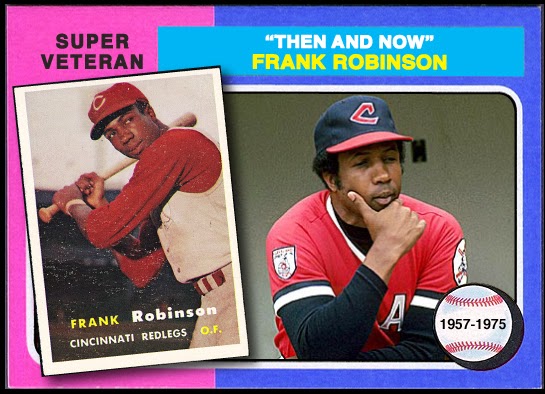Sorry for the late post! Had to trek out to upstate NY for the newest member of the family, a beautiful Australian Cattle dog/Collie mix pup, no name as of yet! A nice pal for our Anatolian Shepherd, "Bossy".
Anyway, onto today's topic...
When I recently designed my "Super Veterans" card for Jim "Catfish"
Hunter, I took a closer look at his 1965 rookie card and realized that
Skip Lockwood, who I grew up knowing as a pitcher for the N.Y. Mets,
actually came up as an infielder with the Kansas
City A's.
Take a look:
On top of that, after his initial 1965 rookie card appearance, the
next time he was on a baseball card was in the 1970 Topps set (#499),
now as a pitcher for the Seattle Pilots: a five year gap.
Take a look at his follow-up card from the 1970 set:
I never realized Lockwood's road to the big league mound, and that
he was first a shortstop for the A's in 1965, without much success in 42
games: four hits (all singles) in 33 at-bats, a .121 batting average.
Stranger still, aside for those 42 games with the parent club, Lockwood didn't play any Minor League ball that year (?). Weird.
Over the next three years, he was mired in the Minors, now
converted to a pitcher, and eventually found himself as a member of the
new Seattle Pilots come 1969. Getting into six games, good for 23
innings of work and a 0-1 record.
(It also raises the obvious question as to why Topps gave him a card in the 1970 set with such scant playing time!)
In 1970, Lockwood would become a full-time Major League pitcher,
and go on to have 11 decent years pitching for the Brewers, Angels, Mets
and Red Sox.
He'd really find his niche as a reliever for the New York Mets
between 1975 and 1979, having his best year in 1976, going 10-7 with 19
saves and a nifty 2.67 earned run average over 56 games and 94.1
innings.
The following year he posted a career high 20 saves for the Mets,
with a 7-13 record and 3.57 E.R.A., in 57 games and 104 innings.
After a year pitching for Boston in 1980, Lockwood's big league
days were over, retiring with a 57-97 career record, with a 3.55 E.R.A.,
five shutouts, 68 saves and 829 K's in 420 games.
Not bad for a guy who came up as a weak-hitting midfielder.





















.jpg)









